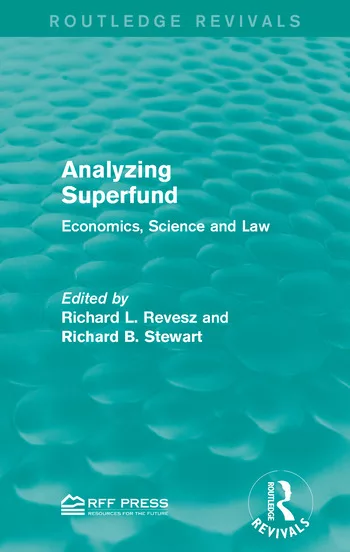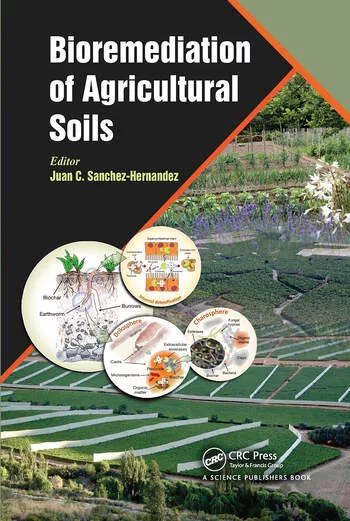Why USDA opposes proposed EPA rule on PFOA, PFOS
USDA offers 12 suggestions to EPA's proposed hazardous substance listings for perfluorooctanoic and perfluorooctanesulfonic acids.

Image of USDA HQ in Washington, D.C., courtesy of the United States Department of Agriculture
It's rare for a federal agency to weigh in on the policy of another agency with public comments, but the U.S. Dept. of Agriculture recently submitted one regarding the Environmental Protection Agency's proposed rule to designate perfluorooctanoic (PFOA) and perfluorooctanesulfonic (PFOS) acids as hazardous substances.
Signed by Andrew Perry of the USDA's Office of Budget and Program Analysis, the public comment makes 12 suggestions to soften the language of the preliminary rule; which has attracted a wide range of detractors.
1. Section III. General Information. A. Executive Summary. Paragraph 5, Page 54417
EPA makes a specific statement that "PFOA and PFOS have been found in wild and domestic animals such as fish, shellfish, alligators, deer and avian eggs. Since this is not a comprehensive list, USDA suggests revising the language to only "wild and domestic animals."
2. Section III. General Information. A. Executive Summary. Paragraph 6, Page 54417
EPA specifically identifies that "agricultural discharges" are environmental sources covered by this proposed rule. PFOA and PFOS are not generated on farms, but released on farms from external sources. Agricultural discharges are second my and inadvertent. It appears the purpose of this rule is focused on industrial, commercial, military, or similar primary sources that may rank eligible as Superfund sites. FPAC suggests removing inadvertent agricultural discharges from direct mention in this rule.
3. General comment for "Requirements Upon Transfer of Government Property"
EPA states that when selling or transferring Federally owned real property, Federal agencies would be required to meet all of the property transfer requirements in CERCLA section l 20(h) concerning notice and other agency requirements for real property transactions. EPA should clarify what is considered real property under CERCLA section l 20(h). For example, does this also extend into long-term easements or other long-term agency collateral interests in real property involved in USDA farm loan programs or other Federal actions?
4. Section III. General Information. A. Executive Summary. Paragraph 13, Page 54418
EPA requests comment and information for additional advanced proposed rulemaking to assist in the development of potential fi1ture regulations pertaining to other PFAS designation as hazardous substances under CERCLA. EPA should state which PFAS chemicals they are requesting additional information or comment on since there are 1000s of chemicals in the pee fast family. In addition, there are four specific PFAS chemicals beyond PFOA and PFOs that have been announced for a preliminary determination under the SDWA rule and for regulation under RCRA. If these other four PFAS compounds (GenX PFBS, PFNA and PFHxS) are the focus of this request, then comments can be streamlined to better ensure that different PFAS proposed rules are in harmony. Moreover, GenX PFBS, PFNA and PFHxS have also been identified as additional PFAS with proposed maximum contaminant levels (MCLs) and are the only additional P FOSS assigned values in the recent EPA published Regional Screening Level (RSL) tables. To provide consistency, regulatory certainty, and protection of human health and environment, EPA should consider designating these other four PFAS substances in this rule
5. General Comment on the Reportable Quantity (RQ) for PFOA and PFOS
EPA is proposing a Reportable Quantity (RQ) of one pound or more in a 24-hour period for PFOA and PFOS releases. In light of data showing toxicity at extremely low levels for PFOS and PFOA and current RSLs and drinking water advisories and proposed MCLs, an RQ of one pound or more in 24 hours seems unreasonably high for protection of human health and the environment. EPA should explain the relationship between the proposed RQ and PFOA and PFOS.
6. Section V. Part 3. Environmental Prevalence. Paragraph 5, Page 54427
EPA concludes that "the use biosolids on farmland and home gardens can lead to the uptake of PFOA and PFOS in the food chain, as acknowledged by the U.S. Food and Drug Administration (FDA). "A distinction should be made between uptake and introduction exposure. The use of biosolids on farmland can lead to exposure or introduction of PFOA and PFOS onto farms (i.e., contamination) and into the food chain; it may not lead to uptake, as written. This is a subtle, but important distinction when referring to chemical uptake by biological organisms. Nothing in the FDA reference cited suggests biosolids lead to uptake.
7. General Comment for biosolids related to PFOA and PFOS contamination
Biosolids applied as fertilizer on agricultural lands are mentioned numerous times throughout this proposed rule as contamination source of PFAS. Typically, a PFAS waste stream to a utility is needed before biosolids would be contaminated, which would make this potentially more isolated to certain WWTPs accepting such waste stream. Furthermore, EPA does not plan to complete a risk assessment on biosolids until 2024. Additional research on PFAS and biosolids should be conducted before a broad characterization is made in a national CERCLA designation rule related to PFAS contaminated biosolids and agriculture. Not all biosolids are contaminated and not all biosolids require regulation.
8. Section V. Part 3. Environmental Prevalence. Paragraph 11, Page 54428
Snack foods are identified in a section discussing PFAS presence in environmental and wild/domestic animals. Snack foods should be more appropriately categorized in a section of the rule related to potential food product contamination.
9. Section V. Part 3. Environmental Prevalence. Paragraph 14, Page 54428
It is stated that contaminated water results in the contamination of beef, pork, poultry, etc. This language is misleading and overreaching. Contaminated water may not result in contamination of beef, pork, and poultry. Contaminated water is a potential source of PFAS exposure for cattle, pigs, and chickens.
10. Section VII. A. EPA Actions. Paragraph 5. Page 54430
In 2019, EPA issued the interim recommendations to address groundwater contaminated with PFOA and PFAS to facilitate cleaning up contaminated groundwater that is a current or potential source of drinking water. EPA references the 2019 interim guidance. However, this reference does not appear consistent with the 2019 interim guidance as stated in the proposed rule. The 20 The 2019 interim guidance states "screening sites using a recommended groundwater screening level based on a target HQ of 0.1 for PFOA and PFAS is currently 40 PPT." The reference in the rule appears to be consistent with recent RSLs and RMLs, published in 2022. EPA should consider rescinding the 2019 guidance to avoid further confusion.
11. Section VII. A. EPA Actions. Paragraph 9, Page 54431
A states they are finalizing a risk assessment for PFOA and PFOS in biosolids. which will serve as the basis for determining whether regulation of PFOA and PFOS and biosolids is appropriate. EPA should clarify the statement applies to Clean Water Act regulation if that is the case. Once PFOA and PFOS are designated as hazardous substances under CERCLA, PFOA and PFOS releases, even in biosolids or other media that have been land applied or at least could be subject to CERCLA.
12. Section VII. C. State Actions, Page 54432-54436
EPA should verify all state actions are correct and updated in the proposed rule. For example, EPA states the Wisconsin recommended groundwater standards for PFOA and PFOS are 20 PPT. However, the Wisconsin Natural Resources Board declined to adopt the 20 PPT, but approved 70 PPT for PFOA and PFOS as enforceable drinking water standards that went into effect in August 2022.


.webp?height=200&t=1674043769&width=200)


